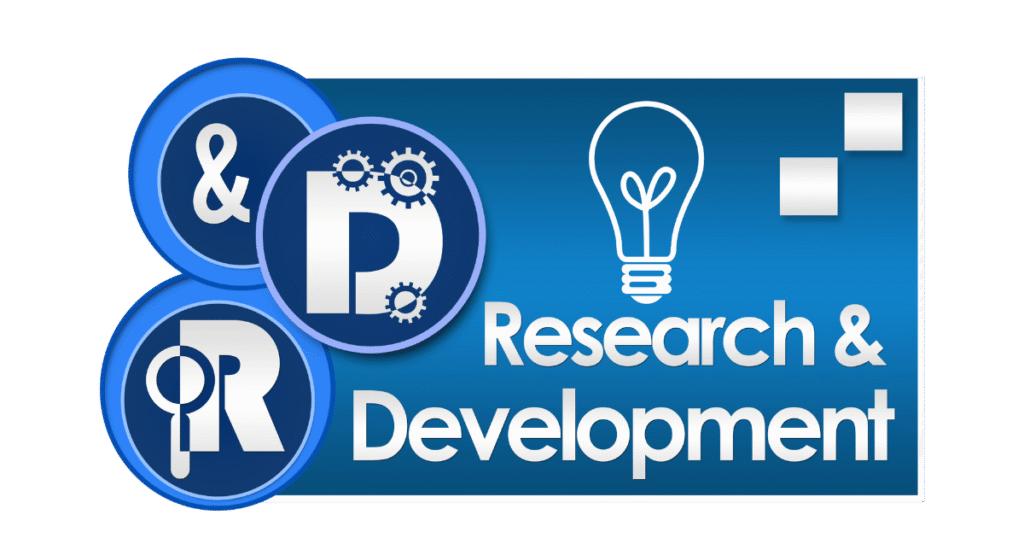
Table of Contents
A few weeks ago, over coffee, a CTO from a global automotive brand shared a frustration that stuck with me.
“We’ve been trying to collaborate with a prestigious university on EV battery optimization. Eight months in—we’re still stuck on IP paperwork. Meanwhile, our competitors are already field-testing prototypes.”
This wasn’t a one-off complaint. I’ve heard versions of this across sectors: in telecom, energy, climate tech, aerospace. Groundbreaking research exists. Urgent industrial needs exist. But connecting the two? That’s the hard part.
This disconnect has a name: The Innovation Gap—and it’s quietly becoming a trillion-dollar problem.
The $2 Trillion Problem Nobody Talks About
Today, the time it takes for research to move from lab discovery to real-world application has increased by over 40% in the last decade. In an era where tech cycles are measured in quarters—not years—this lag is more than inefficient.
It’s fatal.
Innovation isn’t just about inventing something new anymore. It’s about delivering it first. Speed matters. And unfortunately, the institutions we rely on to power innovation—academic labs, public research institutions, even some corporate R&D centers—are often the slowest part of the system.
Why Traditional R&D Models Are Breaking Down
Let’s give credit where it’s due: academia has given us the internet, GPS, machine learning, and more. But the modern research system wasn’t built for speed. It was built for citations, peer review, and long-term knowledge creation.
Industry, on the other hand, lives in the now.
Here’s the reality:
- Timelines are misaligned: Academic projects run on semesters and grant cycles. Industry moves in sprints and product deadlines.
- Incentives don’t match outcomes: Researchers are rewarded for publishing papers—not building prototypes.
- Red tape slows everything: IP negotiations, compliance checks, legal reviews—it can take months just to kick off a project.
- Failure isn’t an option: Academia avoids the trial-and-error that’s essential for innovation. But failure is how breakthroughs happen.
Even corporate R&D teams aren’t immune. Many are constrained by budgets, internal silos, or the pressure to maintain existing product lines. The result? The real-world problems pile up while innovation stalls on the whiteboard.
So, what’s the way forward?
A New Breed of Research Organizations Is Emerging
At Experiqs, we’ve asked ourselves this question every day since we started. We’re not a university lab. We’re not a typical engineering consultancy. We’re a PhD-led, interdisciplinary R&D team designed from scratch to work like a deep-tech startup—fast, focused, and obsessed with real-world outcomes.
We believe R&D doesn’t have to be slow. And research doesn’t have to stay locked inside journals. It should solve actual problems. It should create value. And it should be done by people who care more about deployment than decoration.
The New R&D Paradigm — In Action
Let me show you what this looks like:
Case Study: EV Component Optimization
A client came to us for help designing a next-gen electric drivetrain. Their initial approach? A university partnership. Estimated timeline: 6 months for paperwork, 12–18 months of research, 3–6 months for tech transfer. Total: ~2 years.
With Experiqs, the project started within a week. We assembled a cross-functional team—fluid dynamics, ML, systems design—and began iterating. A functional prototype was delivered in 4 months, at 60% lower cost.
Why? Because we cut the bureaucracy, aligned the incentives, and focused entirely on solving the problem—not writing about it.
Case Study: Energy Optimization for Data Centers
A cloud services company needed real-time HVAC optimization using digital twins. Academia quoted them 18–24 months just for feasibility.
We built and deployed a working prototype in 3 months.
- CFD simulations? Check.
- Predictive ML models? Check.
- IoT integration? Check.
- Optimization engine? Running in real time.
Result? 25% reduction in energy costs during the pilot phase, with a rollout plan already in motion.
What Makes Agile Research Different?
1. Built Around Problems, Not Departments
In academia, researchers work in silos—mechanical here, CS there, EE somewhere else. But the world doesn’t work like that. A drone isn’t just hardware or software. It’s both. A digital twin isn’t just a simulation—it’s physics + data + control + cloud.
At Experiqs, every project team is inherently interdisciplinary—because that’s what solving problems takes.
2. Application-First Thinking
We don’t start by asking, “Is this novel enough to publish?”
We start with, “Will this work in the real world?”
Every experiment, model, or design loop is built with deployment in mind.
3. Flexible Partnerships
Traditional IP agreements are rigid, one-size-fits-none contracts. We do things differently:
- Joint IP: Shared risk, shared rewards
- White-label research: Confidential, customized R&D
- Licensing: Scalable terms for long-term adoption
- Hybrid models: Tailored to your commercial needs
4. Speed Without Sacrificing Quality
We move fast, but not loose. Peer reviews happen in sprint cycles. Prototypes are tested iteratively. Our rigor doesn’t come at the cost of time—it comes because we build and validate simultaneously.
The Bigger Picture: Innovation for Everyone
This isn’t just about being faster. It’s about opening access to advanced research.
Historically, deep science belonged to the elite: billion-dollar R&D labs, Ivy League campuses, global corporations. Now? Experiqs is bringing that capability to:
- Startups building deep-tech without massive capital
- Mid-sized firms exploring new product lines
- Governments responding to complex, fast-moving challenges
- Corporates needing high-level technical support—without hiring 10 PhDs
We’re narrowing the valley between research and reality.
What This Means for You
If you’re a CTO, innovation lead, or founder, this is your chance to rethink how you do R&D.
Imagine:
- Validating a new product concept in 6 weeks, not 6 months
- Solving a mission-critical engineering problem—without hiring a new team
- Running feasibility studies in parallel, so you’re never stuck waiting
- Partnering with researchers who care as much about product impact as you do
We call this Research-as-a-Service—and it’s here to stay.
So, What Comes Next?
We believe the next generation of innovation will be powered by networks of agile, distributed, and deeply specialized research teams—each working faster, smarter, and more flexibly than traditional institutions ever could.
- Global in mindset
- Interdisciplinary by design
- Platform-ready and problem-focused
The question isn’t whether your industry will adopt agile research models—it’s whether you’ll lead the transition or play catch-up.
Let’s Close the Innovation Gap
At Experiqs, we’re building this future—one prototype, one solution, one partnership at a time. If you’re exploring a high-impact problem, facing a complex technical challenge, or just tired of waiting for innovation to happen, we’d love to talk.
Because the future doesn’t belong to those with the best ideas.
It belongs to those who build them faster.








